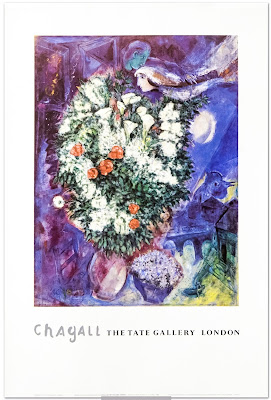Whispers from the Agora: The 2,500-Year Tale of an Ancient Greek Hydria
Greetings, dear reader! I am the Hydria urn, a proud exemplar of ancient Greek pottery, born from the skilled hands of Athenian artisans circa 450 BCE. Allow me to regale you with my tale, for I am not merely a vessel but a bearer of history, art, and the whispers of antiquity.
My creation was a collaborative dance, as was common in those days. A master potter first shaped my elegant form from the finest Attic clay, its high iron content promising the vibrant orange-red hue that would become my signature. Then, some clever painter with an eye for beauty and storytelling adorned my surface with scenes that would captivate viewers for millennia.
Ah, but I am getting ahead of myself! Let me first explain my original purpose. I am a hydria, a water carrier of great importance in ancient Greek daily life. My three handles – two horizontal for lifting and one vertical for pouring – made me a practical choice for the busy households of Athens. But do not mistake me for a mere utilitarian object; I am a work of art, a canvas for the stories and myths that shaped the Greek imagination.
Of the million hydras, why am I so special? Many of my clay brethren bore geometric patterns or scenes from mythology. But my creator chose a rare and captivating subject. Upon my curved surface, you will find none other than Sappho, the famed poet of Lesbos, reading from a scroll while three attendants look on in rapt attention. This scene is a departure from the norm, as contemporary figures were seldom depicted in Greek art of the time.
You might wonder why I bear such an unusual image. Let me tell you a secret – it's all about market demand. You see, while I wasn't a commissioned piece (pottery was quite common and easily acquired in those days), my creators were savvy enough to know what would catch the eye of potential buyers. A scene featuring the beloved Sappho? Now, that was sure to turn heads in the agora!
I must confess that I don't know my creators' names. That's because most Greek vases are unsigned. However, thanks to the meticulous work of scholars like Professor J. D. Beazley, who identified over 500 distinct artistic styles, we can at least group similar works together. One day, some clever archaeologist may connect the dots and give a name to the talented individuals who brought me into being.
You might think that being a hydria would make me relatively standard, but I assure you, I am anything but! My popularity was such that even the Romans, those great admirers (and imitators) of Greek culture, saw fit to create copies of me. Imitation is the sincerest form of flattery, after all!
Let's talk about my clay for a moment, shall we? I'm made of the finest Attic clay sourced from the region around Corinth. This clay is renowned for its high iron content, which gives me my distinctive orange-red color and a lustrous sheen when fired. This material has allowed me to survive for over two millennia, a testament to the skill of my creators and the quality of their materials.
Now, I mentioned earlier that I'm an oddity in terms of my decoration. While Greek literature of the time was full of tales of victory from the Persian Wars, artists seemed curiously uninterested in depicting these historical events or figures. Instead, they preferred to focus on grand mythological battles, particularly those between Greeks and Amazons. But here I am, proudly displaying a scene of intellectual pursuit rather than martial prowess. Perhaps my creator was making a statement about the power of the written word.
Oh, the stories I could tell you about my journey through time! I've witnessed the rise and fall of empires, survived countless generations, and even endured the perilous excavation process. I was unearthed in Kimissalla, Greece, though I can't say I remember much about my time underground. It was a long nap.
You can find me holding court at The British Museum in London these days. It's quite a change from my humble beginnings as a water carrier, but I enjoy the attention. Scholars and art enthusiasts worldwide admire my form and ponder the scene on my surface.
As I reflect on my long existence, I can't help but feel a sense of pride. I am a survivor, a link to a world long past. Modern observers can glimpse ancient Greece's daily life, artistic sensibilities, and cultural value through me. I am a testament to the skill of ancient craftsmen, the enduring power of art, and the complex interplay between commerce, culture, and creativity in the ancient world.
But let's not forget, I'm not just an object of scholarly interest – I'm also quite the conversation piece! Imagine the dinner parties I could enliven with tales of my adventures. "Oh, you went to Paris last summer? How quaint. I once held water for Pericles!" (Perhaps I didn't, but a hydria can dream, right?)
Speaking of dreams, I often wonder about the many hands that have held me over the centuries. From the potter who shaped me to the painter who adorned me, from the merchant who sold me to the households that used me, and finally, to the archaeologists who unearthed me – each has left an invisible mark on my being. I am, in a sense, a repository of countless human stories, most of which will never be known.
The choice to depict Sappho, a female poet, is particularly intriguing given the patriarchal nature of ancient Greek society. Perhaps my creator was making a subtle statement about the power of women's voices in a male-dominated world. Or they may have recognized the enduring appeal of Sappho's poetry. Whatever the reason, I stand as a rare example of a contemporary figure immortalized in Greek pottery.
Did I mention how the larger tradition of Greek pottery evolved? You see, I come from what's known as the "red-figure" period of Greek vase painting. This technique, which emerged around 530 BCE, allowed for greater detail and more naturalistic depictions than the earlier "black-figure" style. I like to think I represent the pinnacle of this artistic evolution.
I find it particularly fascinating how I've been interpreted and reinterpreted over the centuries. In my own time, I was a functional object with aesthetic appeal. To the Romans who copied me, I symbolized Greek sophistication. I was a treasure trove of historical information to the archaeologists who unearthed me. And now, I am a window into an ancient world to modern museum-goers.
Before I let you go, though, I want to leave you with a thought. As you gaze upon me in my museum display, remember that I am more than an artifact. I am a survivor, a storyteller, and a bridge between worlds. In my ceramic form, I carry the weight of history, the beauty of art, and the enduring spirit of human creativity.
So the next time you see a piece of ancient pottery, take a moment to really look at it. Who knows? It might have a story as fascinating as mine to tell. And if you're ever in London, stop by The British Museum to say hello. I'll be the hydria with the Sappho scene, looking as dashing as ever after 2,500 years. -Shel St Clair




Comments
Post a Comment